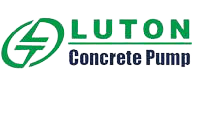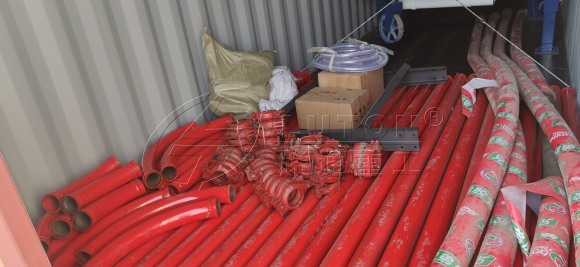
Concrete pump pipeline is one of the most important components in concrete pump equipment. It is the last key link in the concrete conveying of various line pump machinery. The name concrete line pump is also from its pipeline conveying method.
Get The Free QuoteWhat Is Concrete Pump Pipe Used For
As we all know, concrete pipe is used for conveying concrete mixture to different construction areas.
Because of concrete pump pipe, concrete pumps can deliver different kinds of concrete materials to almost any construction site on any terrain. No matter at narrow tunnels, ditches, mountains, embankement dam with rugged terrain, or large scale airports, railway station constructions, concrete pipes can always guide concrete raw materials into almoste every application area.
Through resonable and flexible pipeline layout, the project construction group can greatly improve the construction efficiency and quality, therefore create more benefits.
How Much Is Concrete Pump Pipeline
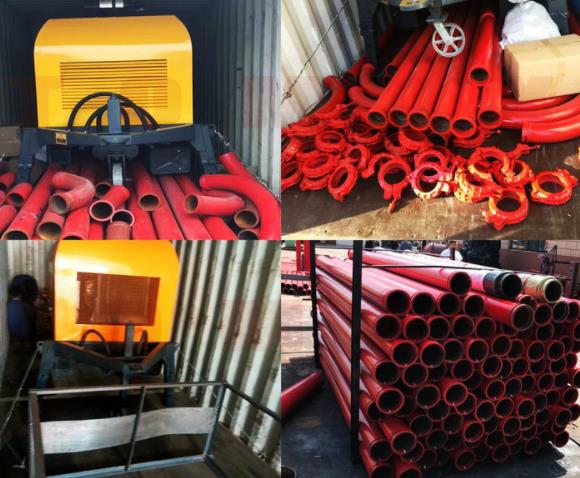
Concrete pump pipeline price is various depending on different types, materials, specifications and brands. Normally, the market price of streight steel pipe is about $3,000 per 100m.
Generally, once customers purchase a concrete pump machine with standard configurations, LUTON will provide pipes with certain length, type and accessories, to ensure that the pump machine can be put into use as soon as possible.
Certainly, concrete pump pipe belongs to consumables in the pump equipment, whose service life is limited. In order to ensure the pumping efficiency and construction safety, it is necessary to replace pipeline in time after a certain period.
How Many Types Of Concrete Pump Pipeline
Concrete pump pipelines vary with different classification methods.
Use Occasions
Concrete trailer pump pipeline, concrete pump truck pipeline and fine stone pump pipeline are from different usage on various pumping machines.
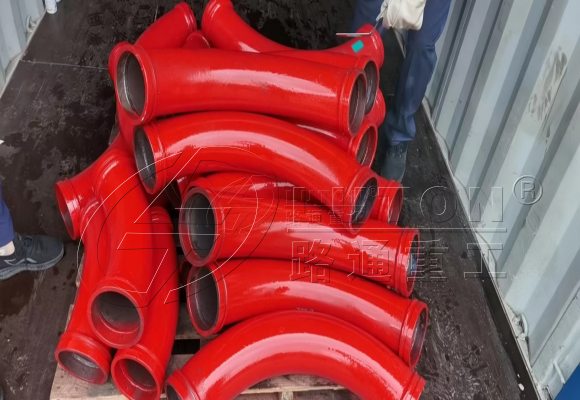
Pipe Shapes
Straight pipe and elbow pipe are for different shape needed onsite.
Pipe Materials
There are also different materials to made of concrete pump pipeline: steel pipe, rubber hose, plastic pipe and so on.
At present, the most widely used concrete pump conveying pipeline is usually made of high strength steel material. This kind of material features as strength and durability, with high-pressure resistance, wear resistance, effectively ensuring the service life of the pipeline.
Pressurization
In order to meet different pumping pressures, the pipes are devided into high-pressure pumping pipeline and low-pressure pumping pipeline, etc.
Specifications Of Concrete Pump Pipeline
The specification parameters of concrete pump conveying pipeline are important indicators that must be referred to when determining the conveying scheme. So, they are also the key factors for the smooth pumping progress and high quality and efficient pumping.
Standard Pipeline Configuration For LUTON Concrete Pump
| Number | Type | Specification | Unit | Quantity |
| 1 | Staight Steel Pipe | Φ125*3m | piece | 27 |
| 2 | Staight Steel Pipe | Φ125m*2m | piece | 2 |
| 3 | Staight Steel Pipe | Φ125*1m | piece | 2 |
| 4 | Staight Steel Pipe | Φ25*1.5m | piece | 2 |
| 5 | Elbow Pipe | Φ125 / 90° | piece | 6 |
| 6 | Elbow Pipe | Φ125 / 45° | piece | 4 |
| 7 | High Pressure Hose | Φ125x3m | piece | 1 |
| 8 | Clamp | Φ150 | set | 2 |
| 9 | Clamp | Φ125 | set | 43 |
| 10 | Reducer | Φ150 – 125 | piece | 1 |
Pipeline Material
The material of concrete conveying pipe mainly includs steel pipe and rubber pipe. Steel pipe is divided into ordinary steel carbon pipe and alloy steel pipe. The material of ordinary carbon steel pipe is Q235, Q345, etc. The mateial of alloy steel pipe is 16 Mn. The rubber pipe is natrual rubber or synthetic rubber material.
In the pumping process, concrete pump squeezes concrete into conveying pipelines, which requires the pipeline to have strong pressure resistance and wear resistance.

Pipeline Diameter
The pipeline diameter usually ranges from 100mm to 200mm. The most common pipe diameter for LUTON concrete pumping pipe is 125mm.
Selection of pipeline diameter depends on the viscosity of concrete and transfer distance. To ensure smooth concrete flow in pipeline, concrete with a higher viscosity or a longer delivery distance requires a larger pipe diameter.
Pipeline Length
Concrete pump pipeline is long from 1m to 6m. LUTON Group usually provides pipeline lengths including 3m, 2m, 1.5m and 1m.
Generally speaking, the shorter the concrete pipeline, the more stably concrete conveys. That is because short pipeline generates less flow friction. But if the pipeline is too short, more connectors are required, which may lead to pipe leakage.
Pipe Wall Thickness
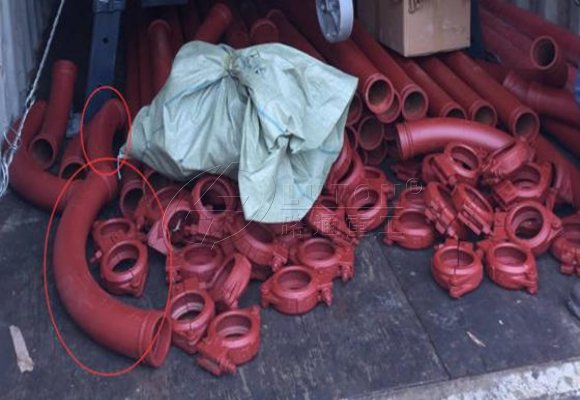
The wall thickness of concrete pump pipeline is usually between 5 -7mm, so, the standard wall thickness of the pipe adopted by LUTON GROUP is usually 5mm.
Generally speading, the thicker the pipe is, the stronger the pipe is. It means a good high-pressure resistence. But too thick pipe wall will reduce the delivery capacity of the pipe.
Pipe Bending Radius
For elbow pipes, bending radius are an important parameter besides material, diameter and wall thickness.
The size of the bending radius depends on the angle and the position of the pipe bending. The bending radius is usually 1.5-3 times the pipe diameter.
The most commonly used bending angles of LUTON GROUP concrete pump pipe are 45°and 90°.
Pipe Joints And Fittings
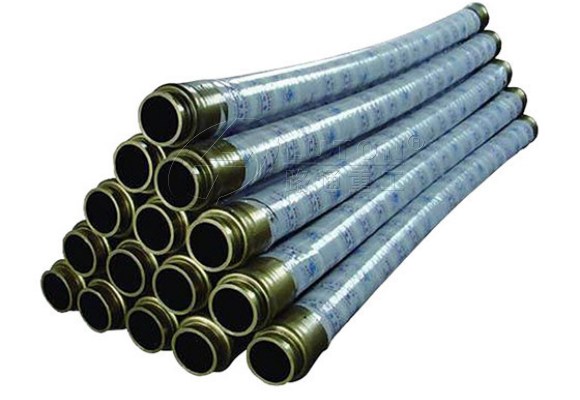
These accessories provide tightly connection of pipes and a reliable guarantee for the flexible laying of concrete conveying pipeline. And also they facilitate the installation and maintenance of pipelines.
High Pressure Hose
Concrete hose is usually used at the end of the concrete conveying line. It is made of SBR/NR rubber material reinforced with steel braids.
Unlike steel pipe, rubber hose has strong flexibility and can be controlled by manual operation to realize the final accurate placement position of concrete.
Manufacturer And Supplier of Concrete Pump Pipeline
DMI
Dinesh Metal Industries founded in 1995, is a seamless steel tubes and pipes manufacturer. It is one of the most significant steel tube supplier in Indian Market.
JGB
JGB Enterprises, Inc. is the largest industrial and hydraulic hoses and hose accessories company in the United States. It also services the needs of the United States Armed Forces, NATO, and various Froeign Military Services throughout the world.
JGB Concrete Connection products including concrete pipe, elbows and reducers support a high performance solution to maintain a smooth full flow transfer of concrete, shotcrete, wet or dry cement mixture, gravel, sand, grout, plaster and lime through concrete placement hoses.
Pump Parts
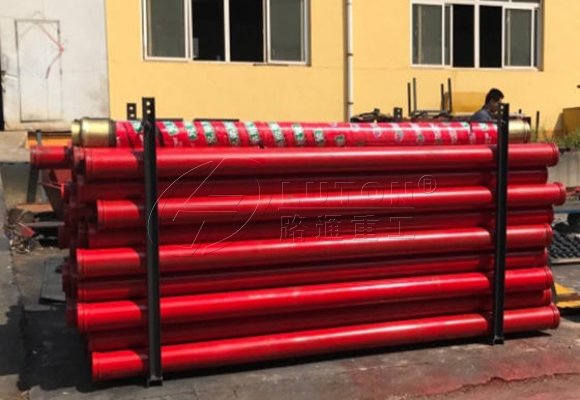
Pump Parts Ltd. is based in Oxfordshire, UK. With more than 25 years experience in the manufacture and supply of steel pipeline, concrete placing hoses and accessories for the construction sector, Pump Parts offer high quality products and a unique serviece for local concrete, formwork, tunneling and piling customers. It has large well equipped modern factory and warehouse, with fully automated manufacturing porcesses.
ESSER
Founded in 1948, ESSER has been developing piping systems, which are located in the leading line on the market today. Set up in Warstein, Germany, ESSER service customers in more than ten industries around the world, the products including twin-walled pipes, thick and thin walled pipes, hoses, reducers, elbows, special shape pipes.
How To Place Concrete Pump Pipeline Onsite
On modern construction sites, concete is delivered by various pump equipment through pre-set concrete pump pipeline. How to place concrete pump pipeline onsite is one of the most important issue of concrete conveying scheme. There are some layout principles need to take into consideration before place concrete pipeline.
Step 1
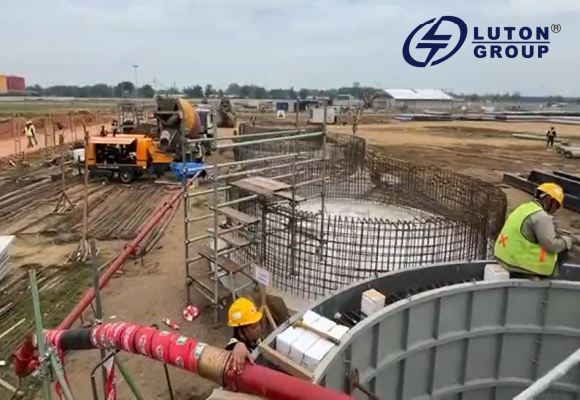
Under the circumstance of smooth concrete puming and normal concrete transmission, shorten the pipeline length and reduce elbow pipe number as possible as you can, to reduce the transmission resistance.
Step 2
The pipeline layout is depended on the pumping pressure. Place new pipeline and high-pressure pipeline at the point with high pumping pressure. Check the pipeline timely to ensure normal working condition.
Step 3
Different pumping directions need different layout methods. When the pipe is arranged downward, the drainage valve should be set at the top; When piping up, the length of the bottom horizontal section should be not less than 1/4 of the length of the vertical pipe, and not less than 1m. And the stop valve should be set in a certain position.
No matter the placing direction is horizontal, upward or downward, the concrete pump pipeline should all be fixed firmly, especially the elbow connecting points. The pump pipe fixation should not have any relationship with the formwork support, and the rubber between the pump pipe and the bracket.
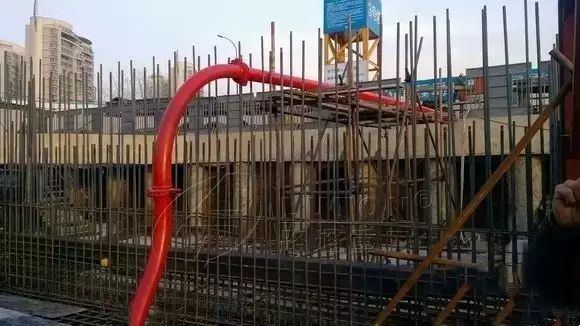
Step 4
The vertical pipe layout should be arranged according to the construction structure characteristics. Make full use of the column, wall, floor and vertical transportation machinery, equipment holes as the support and attachment point of the vertical pipe, gradually rise to the top, and keep the whole vertical pipe in the same straight line.
At the same time, convenient disassembly, easy troubleshooting, safe and reliable attachment should be also taken into consideration.
Step 5
Reinforce properly all turns of the concrete pump pipeline, and add supports along the direction of pipe vibration. The elbow closest to the pump machine is effected by the greatest pumping force, so it should be hold tightly with a firm support to reduce vibration.
6.In summer, in order to reduce the temperature of concrete into the mold, the horizontal pipe in the open air should be wrapped and watered to prevent too fast slump loss of concrete at high temperature and cause pipe blockage.
FAQ About Concrete Pump Pipeline
Why Concrete Pipe Is Blocked
During pumping procession, one of the last problems the construction team wants to encounter is the blocked pipeline. Pipeline blockage not only affects the construction progress, brings economic losses, but also affects the service life of the equipment itself, bringing equipment losses.
There are multiple factors leading to pipe blockage:
- Improper operation during pumping
- The pipe connection errors
- Concrete or mortar segregation
- Slurry leakage at some part
- Unqualified concrete or mortar quality
- Sudden temperature change
In fact, to understand the cause of pipe blockage, operate according to the standard operation and maintenance of pumping equipment and transmission pipeline, can avoid most of the occurrence of pipe blockage.
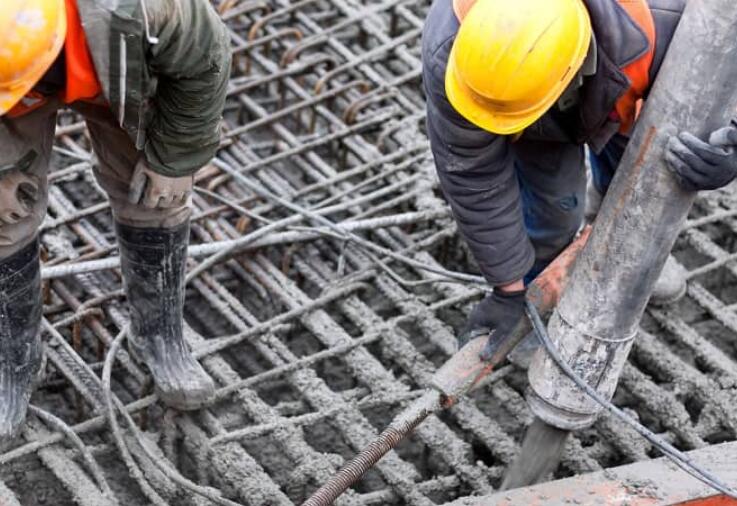
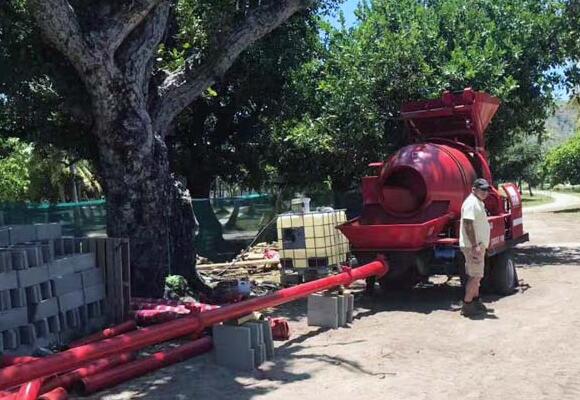
How Long Can Concrete Be Delivered By Concrete Pump Pipeline
How To Do For Concrete Pump Pipeline Maintenance
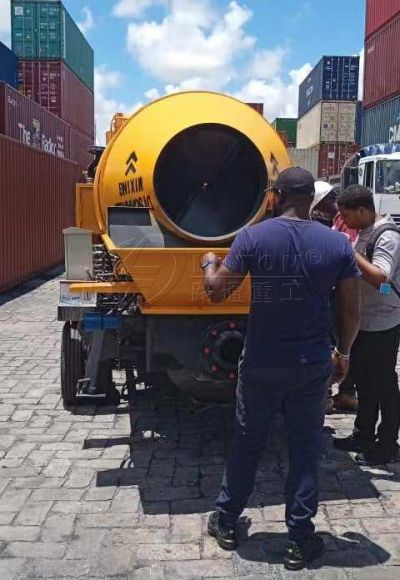
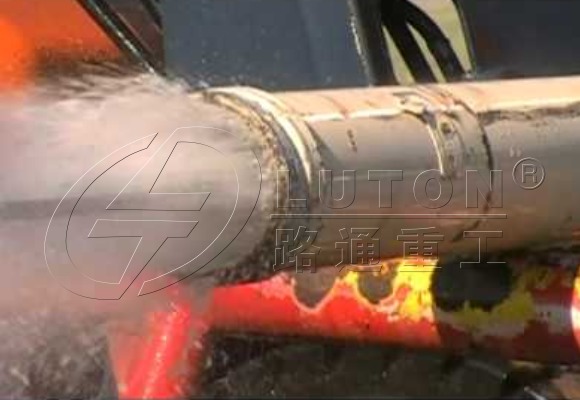
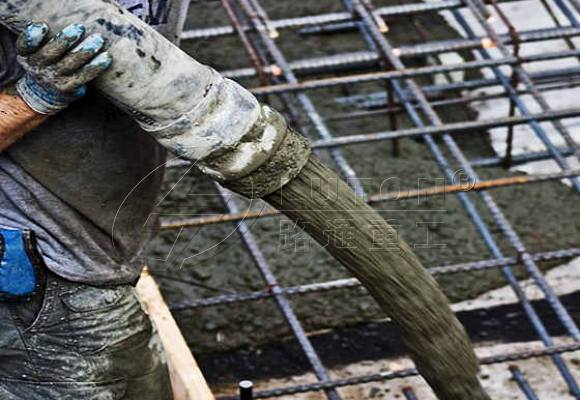
How To Clean Concete Pumpline
After the completion of each pumping task, the timely cleaning of the residual concrete in the concrete pump pipeline is an important part of the maintenance, which is also the basic operation to extend the service life of the pumping pipeline and reduce the construction cost.
1.Preparation before cleaning pipes
Before cleaning, it is better to pump all of 0.5-1m3 mortar. Then stop the pump machine, remve the energy storage device pressure.
2.Put the water-soaked cleaning sponge ball into the pipeline, close the discharge door, and then fill the hopper with water and keep the water source constant. Then pump water until the cleaning ball is pumped out of the front end outlet of the concrete pump pipe.
3.Pay attention to the water in the pipe when it comes to the end of the washing, do not flow to the concrete pouring construction site, to prevent from affecting the concrete quality.
Contact Us
There are also many details on concrete pumps, concrete pump pipelines, and also other accessories. LUTON provides full-process consulation and services, solving various concrete onsite delivery problems for you. Welcome to contact us.

